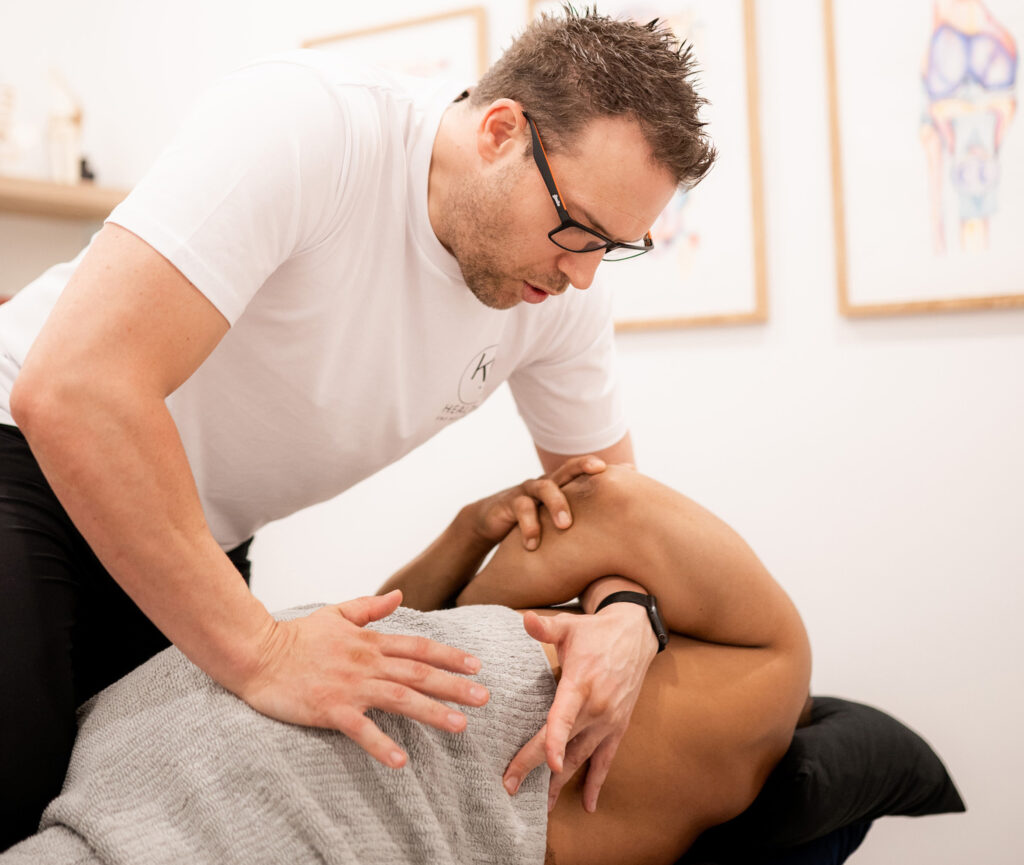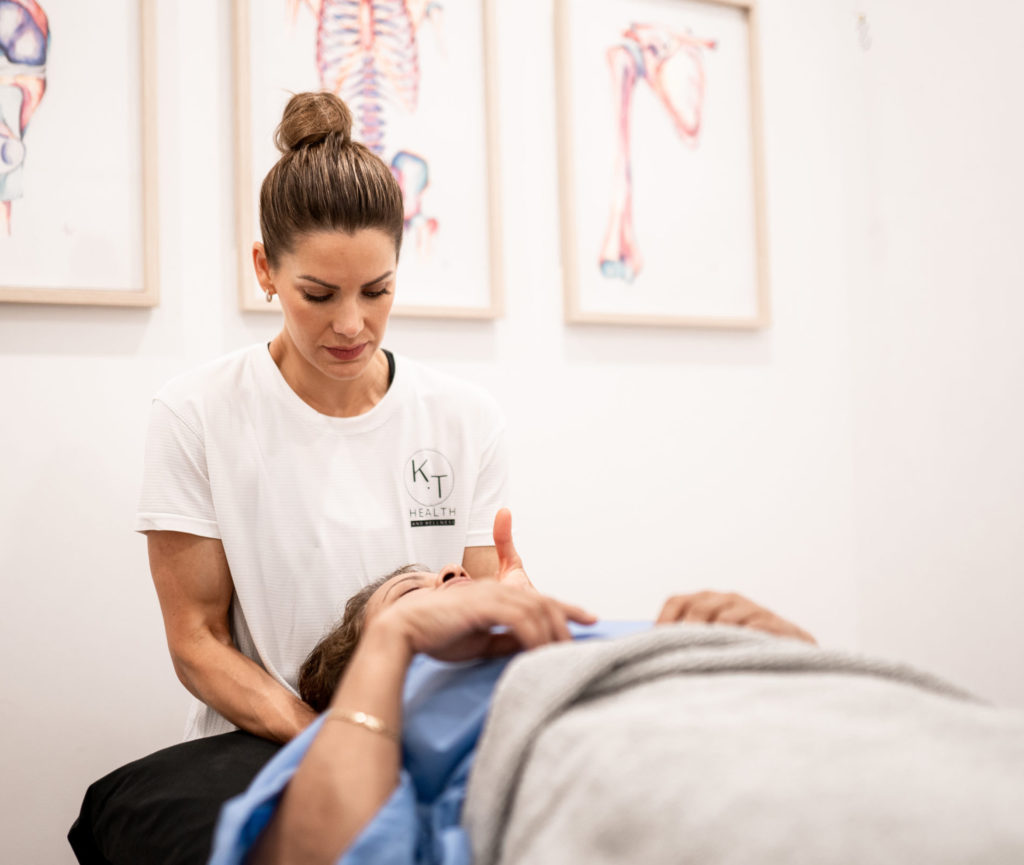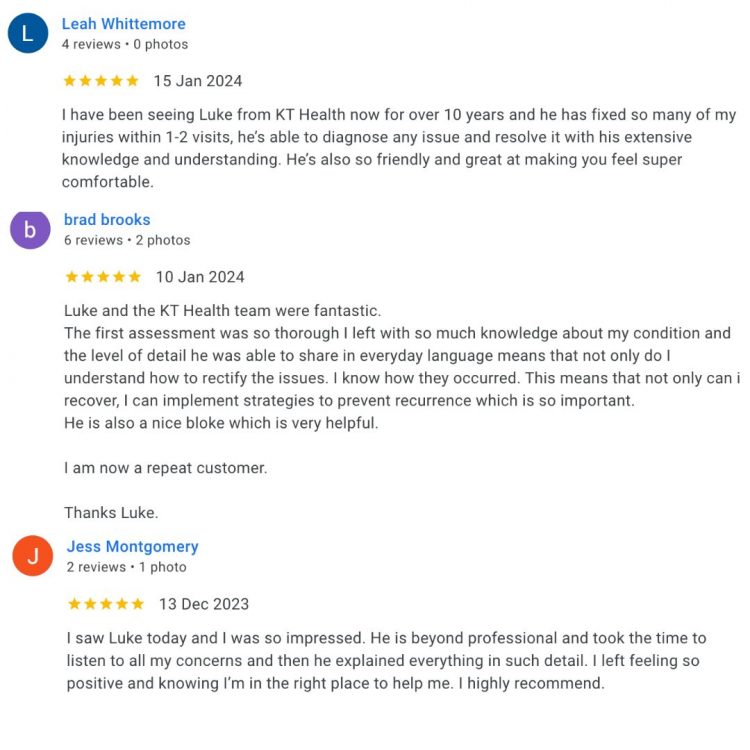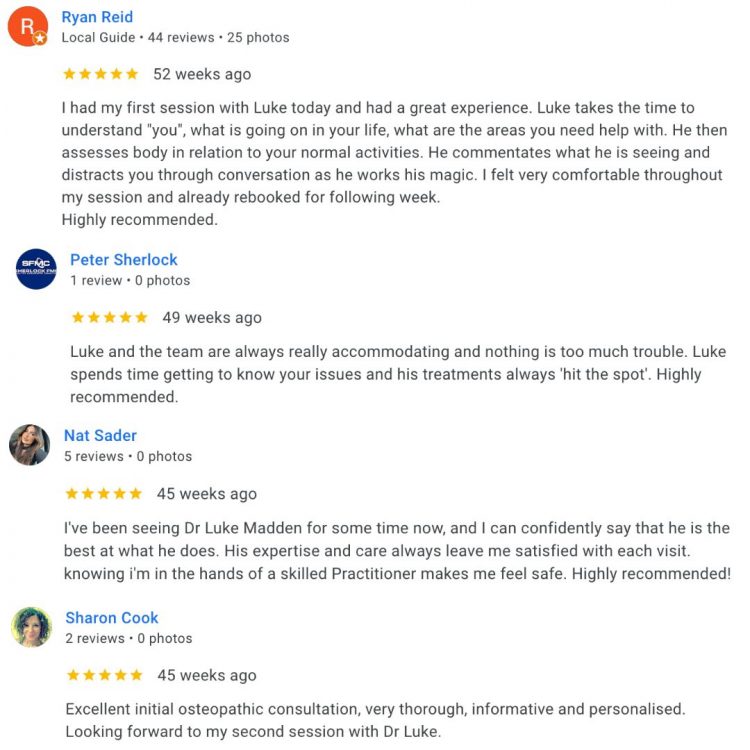Everything You Need to Know About a Gluteal Strain
What is a Gluteal Strain?
A gluteal strain is when one of the glute muscles in your buttocks gets overstretched or torn. It usually happens during sudden movements, like sprinting, jumping, or changing direction quickly. The injury can range from a mild muscle pull to a more severe tear.
An analogy…
Imagine the glute muscle like an elastic band. If you stretch it too far or too quickly, it can tear or snap, that’s what happens during a gluteal strain.
What are other names that a gluteal strain can be called?
Gluteal Tear, Buttock Strain, Torn Gluteal Muscle
What causes a gluteal strain?
The gluteal group includes gluteus maximus, medius, and minimus, which are responsible for hip movement and stabilising the pelvis. A strain usually happens when the muscle is overloaded, especially during sudden or forceful actions. This can lead to small tears in the muscle fibres, causing pain and inflammation.
What are the signs and symptoms of a gluteal strain?
- Pain in the buttock, especially during movement or sitting
- Sudden sharp pain at the time of injury
- Swelling or bruising around the glute area
- Tenderness to touch over the affected muscle
- Difficulty walking, climbing stairs, or bending forward
What tests are used to diagnose on a gluteal strain?
Palpation: Checking for tenderness, swelling, or a gap in the muscle
Range of motion tests: Assessing hip movement and pain during activity
Strength testing: Comparing glute muscle strength side to side
How long does a gluteal strain take to heal?
Grade 1 (mild) strains may heal in 1 to 2 weeks. Grade 2 (moderate) strains often take 3 to 6 weeks. Grade 3 (severe) strains with major tearing can take 8 to 12 weeks or more, especially if rehabilitation is delayed.
How does a gluteal strain happen?
- Sudden explosive movements
- Overstretching the muscle, especially during kicking or lunging
- Inadequate warm-up or tight muscles
- Weak gluteal or core muscles that can’t stabilise the pelvis
- Previous hamstring or hip injuries
- Overtraining without enough recovery
What treatment can help a gluteal strain?
- Rest and avoiding painful movements during early stages
- Ice in the first 48–72 hours to reduce swelling and pain
- Compression and elevation if swelling is present
- Manual therapy (massage, dry needling, or soft tissue release)
- Gradual stretching and strengthening exercises as pain settles
- Progressive return to sport or activity, guided by a practitioner
What exercises or stretches can I do for a gluteal strain?
- Gentle glute stretches
- Isometric glute activation
- Glute bridges and clamshells
- Side-lying leg lifts and step-ups
- Balance and stability drills
What products can help with a gluteal strain?
Single leg knee hug in supine
Lie on your back with both legs straight.
Bring one knee in towards your chest, using your arms on your shin to help with the movement.
At the point where you feel a stretch, hold this position.

Isometric glutes in supine
Lie on your back with your legs straight.
Clench your buttocks together and hold this position.
Relax and then repeat.

Hamstring stretch in stand
Place the foot of your affected leg onto a chair or step.
Keep your knee straight and foot pointing ahead.
Keeping your back straight, tip forwards from your hips, pushing your buttocks out behind you until you feel a stretch down the back of your thigh.
Hold this position.

Alternating prone hip extension with straight leg – with deep abdominal and pelvic floor activation
Lie down on a mat flat on your front.
Place your hands under your hip bones so that you can feel the muscles in your abdomen.
Tighten your pelvic floor muscle whilst pulling your belly button in towards your spine.
You should feel your abdomen lift away from the floor a little.
Holding this position, tighten your buttock muscle and lift one leg up from the floor.
Ensure this leg remains straight.
You should continue to tense the muscles in your pelvic floor and tummy while you lift, and then lower your leg.
Move your leg at a steady pace.
Once your leg returns to the floor, relax all of your muscles, and then begin the movement again lifting your other leg.

4 point kneeling – resisted hip extension to abduction
Tie a resistance band around your legs, just above your knees.
Start on your hands and knees with your hands under your shoulders and knees under your hips.
Begin arching your back by pushing your tail bone out, making a dish with your spine.
Then, round your back by tucking your tail bone in.
Find the mid-position then keep your back straight by gently tightening your pelvic floor and deep abdominal muscles, pulling your belly button in towards your spine.
Leading with your heel, lift one leg up behind you, keeping your knee at 90 degrees.
Think about pushing the sole of your elevated foot up towards the ceiling.
Extend as far as able, ensuring you do not arch your back or twist your hips as you do this.
Next, bring your knee to the outside, ensuring your foot stays aligned with your hip.
Maintain tension in the band and hold this position.
Control the movement as you bring your knee back down towards the floor, then repeat

STOP GUESSING – START MOVING
See what other people have said about our osteopaths
Trustindex verifies that the original source of the review is Google. KT health has really helped my back and i have been able to get back into competitive sportTrustindex verifies that the original source of the review is Google. Absolutely amazing, I see Louie Nouh who always listens and caters to my needs. He is amazing at his job and always helps alleviate my pain. I highly recommend Louie.Trustindex verifies that the original source of the review is Google. Friendly, supportive staff. Such a lovely place to exercise! Highly recommend.Trustindex verifies that the original source of the review is Google. Amazing instructor, I am new to Pilates felt very comfortable & supported.Trustindex verifies that the original source of the review is Google. I have been suffering from shoulder and neck pain for months - I saw Dr Louie Nouh a couple of time. His treatment really relived the pain. I have full range of movement now. His knowledge on exercise is fantastic.Trustindex verifies that the original source of the review is Google. Absolutely love reformer at menai. Instructors are amazing. Love Michaela and love the small classes. Highly recommend!Trustindex verifies that the original source of the review is Google. The trainers are all amazing , they explain everthing step by step and help where needed . It is an amazing place to relax get to know other people have a laugh . I recommend for anyone .Trustindex verifies that the original source of the review is Google. Ever since I came here I’ve been looked after by Louie and my shoulder is already feeling much better. Highly Recommend these are good people.Trustindex verifies that the original source of the review is Google. SENSATIONAL Chiropractor in Menai! I attended my first appointment with Dr Louis Nouh at KT Health & Wellness who is an absolute genius even after one session with him. He explained everything he intended to address about my lower back condition, all in easy to understand, layman’s terms. He said he would call me the next day to follow and see how I was feeling after our session and guess what, he did! During our session, he made me feel relaxed and comfortable especially as it was my first chiropractic appointment EVER! For some reason, I am actually looking forward to my subsequent sessions with him next week. Don’t get me wrong, he did poke, prod and crack me as necessary but the results made it seem worth it.Trustindex verifies that the original source of the review is Google. I have been seeing Melinda now for a couple of months to help with bursitis in my hip. She is one of the best practitioners I’ve ever seen.. With the use of various tools and techniques she has helped me recover much quicker than I expected. Thanks Mel and see you tomorrow!
We don't offer magic fixes or cures, but a sustainable approach to back pain.
Our Osteopaths will offer you a road map to help you take control of your back pain and feel great again.
BOOK YOUR OSTEOPATH VISIT TODAY
Book a Time with Dr Luke Madden Below
Book a Time with Dr Melinda Madden Below
Already have an account?
Book as a guest
- Book an Appointment






